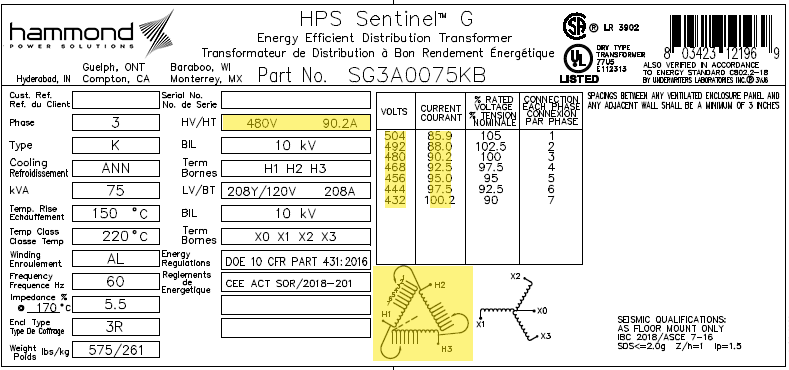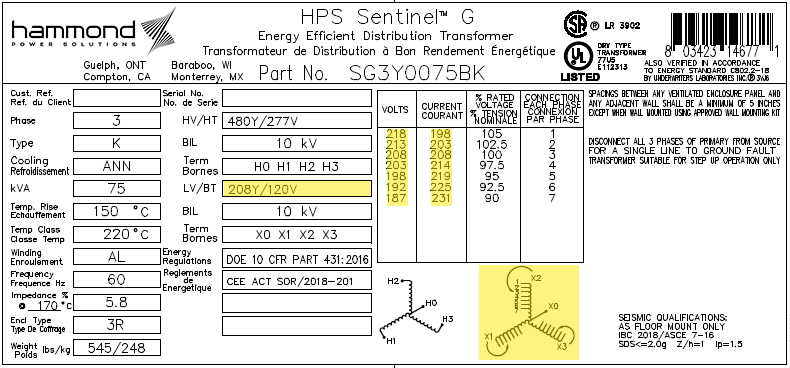Determine Primary Side of Transformer in Solar PV Applications

When a transformer is energized, a large inrush current occurs for a few cycles as the transformer energizes the core. Typically the outer windings are considered the primary windings. If the inner (secondary) windings are used to initially energize the transformer, much larger inrush currents can occur due to the inner coils closer proximity to the transformer’s core. These larger inrush currents can cause unintended tripping of circuit breakers and fuses and should be avoided. Primary in relation to the transformer is not defined by voltage but by which coil is the outer coil.
In the PV/Solar grid-tie applications the primary side of transformer is often incorrectly identified as the side connected to the solar inverter. In practice; the transformer will initially be energized from the side tied to the facility/utility grid. After the transformer is energized from facility/utility grid it will send power to the inverter. The current (load) will remain idle until inverter pushes current back through the transformer to the facility/utility grid when the PV plant generates power. At this point the transformer is being used in a bi-directional application with no additional energizing inrush currents when the PV source is generating power.
Hammond Power Solutions’ transformers are intended to be energized on the side indicated as primary. This allows proper control of energizing inrush currents.
In most applications, HPS has seen a Delta connection successfully used for the connection to the facility/utility grid even if the facility/utility grid power is Wye-Neutral. This typically satisfies grounding requirements without an additional bond at a transformer neutral because the facility/utility grid phases should already be properly grounded when they reach the transformer. Specifiers should review each site for specific needs, utility requirements and local electrical codes before making any final decisions.
A Wye-N with a neutral connected to the facility/utility grid can result in circulating currents through the neutral and transformer overheating. This occurs most often when the PV array is not generating, but there may still be heavy single-phase loads at facility.
It is commonly accepted for inverter connections to grid-tie transformers to be Wye-Neutral. This allows a point on the transformer’s secondary to be solidly grounded. A solidly grounded secondary will allow the inverters to read balanced phase to ground voltages. In most cases an un-bonded (floating) secondary will result in inverter phase imbalance faults.
HPS can provide transformers with any combination of delta, wye and wye-N connections on either the primary or secondary. This technical paper largely describes utility-interactive systems only. Systems that have no utility connection or can switch out utility connections require additional considerations.

Identifying Primary on a Nameplate:

